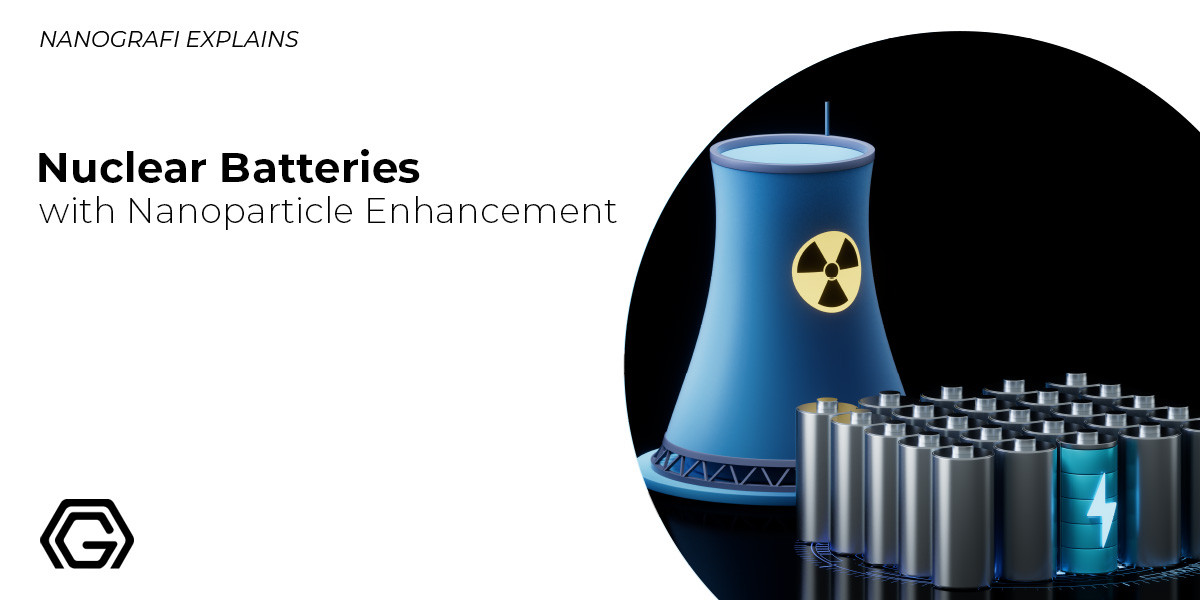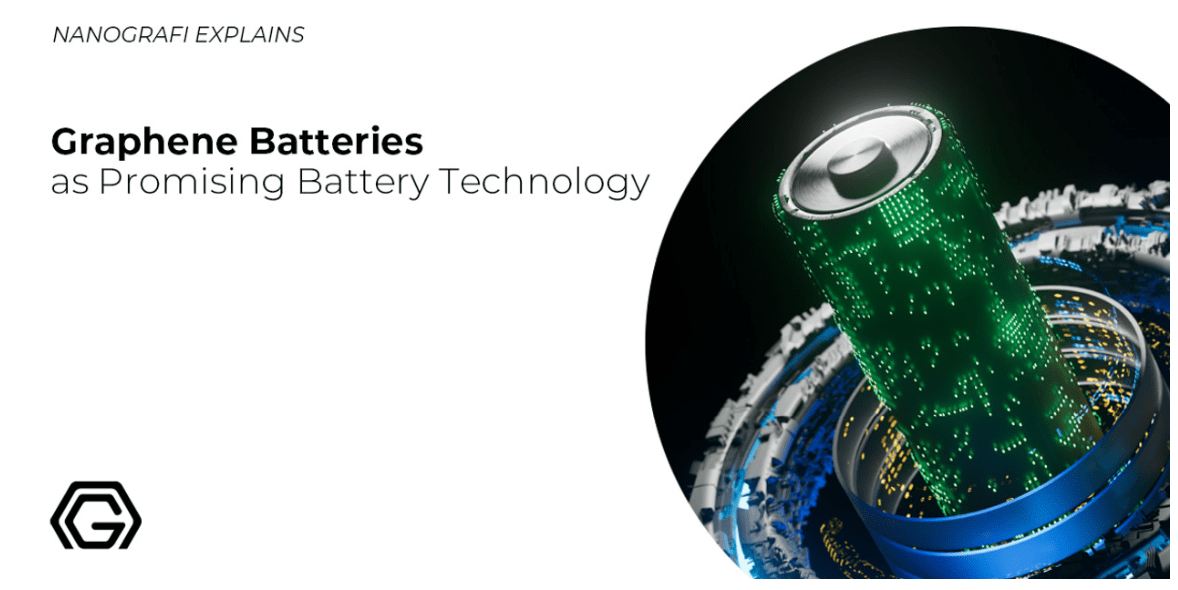Nuclear Batteries with Nanoparticle Enhancement
In the ever-evolving landscape of energy storage, the pursuit of novel and sustainable solutions has led researchers to explore the untapped potential of nuclear batteries. This revolutionary technology, which harnesses the energy released during nuclear reactions, holds the promise of providing long-lasting and efficient power in a variety of applications.
At the forefront of this innovation is the integration of nanoparticles, tiny structures with unique properties that enhance the performance and versatility of nuclear batteries. The demand for compact, reliable, and sustainable energy storage has never been more critical, with applications ranging from powering spacecraft on extended missions to enhancing the longevity of medical implants. The integration of Nanografi's nanoparticles into nuclear batteries represents a significant advancement, potentially enhancing both the efficiency and longevity of these energy storage solutions in a range of applications.
Introduction
This article embarks on a comprehensive exploration of nuclear batteries, delving into the fundamental concepts that underpin their operation, the intricate role played by nanoparticles in optimizing their efficiency, and the myriad applications that showcase their transformative potential. As we navigate through the intricacies of this groundbreaking technology, we will also scrutinize the challenges and considerations that must be addressed to ensure the responsible development and deployment of nuclear energy batteries.
What is Nuclear Battery?
Nuclear batteries, also known as atomic batteries, are innovative energy storage devices that leverage the inherent energy released during nuclear reactions for power generation. Unlike traditional batteries that rely on chemical reactions, nuclear batteries tap into the immense energy potential of nuclear decay or fission.
By capturing the energy emitted during the decay of radioactive materials, these batteries can provide a long-lasting and highly efficient source of power. This characteristic makes them particularly suitable for applications where long-term, maintenance-free energy sources are required, such as in spacecraft, remote sensing devices, and pacemakers. Their ability to operate in extreme environments and to provide consistent power over extended periods without the need for recharging or replacement distinguishes them from traditional energy storage solutions.
Types of Nuclear Batteries
There are several types of nuclear batteries, each based on different principles of energy conversion including radioisotope thermoelectric generators (RTGs), betavoltaic cells, alpha-voltaic batteries, direct charging generators, optoelectric nuclear batteries and stirling radioisotope generators.
Radioisotope Thermoelectric Generators (RTGs)
Radioisotope Thermoelectric Generators (RTGs) convert heat released by the decay of radioactive materials into electricity using thermocouples. The heat generated by the decay process creates a temperature difference across the thermocouples, which then convert this thermal energy into electrical energy. RTGs are widely used in space missions to power spacecraft, probes, and rovers in environments too far from the Sun for solar power to be viable.
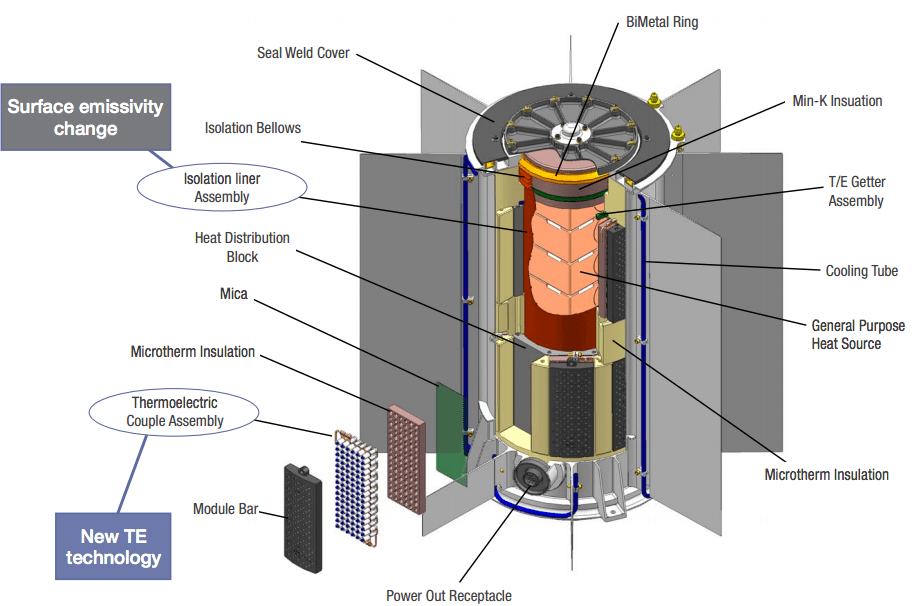
Figure 1. Enhanced multi-mission radioisotope thermoelectric generator.
Betavoltaics
These batteries generate electricity from beta decay of radioactive isotopes, where electrons (beta particles) are emitted. The emitted electrons interact with a semiconductor p-n junction to create an electric current. Betavoltaic devices are typically used for applications requiring low power over long durations, such as in medical implants or remote sensors.
Nuclear Diamond Battery
Nuclear diamond batteries are a type of betavoltaic device that represents an innovative approach to generating electricity through the radioactive decay of isotopes, specifically leveraging carbon-14 (C-14) or other radioactive materials embedded within a synthetic diamond structure. The concept combines the long half-life of certain radioactive isotopes with the semiconductor properties of diamond to create a battery that could potentially last for thousands of years, offering a nearly continuous power supply for low-power applications. This approach not only provides a way to harness the energy from radioactive decay in a highly efficient and safe manner but also addresses the challenge of managing nuclear waste by repurposing carbon-14, a common byproduct of nuclear reactors.
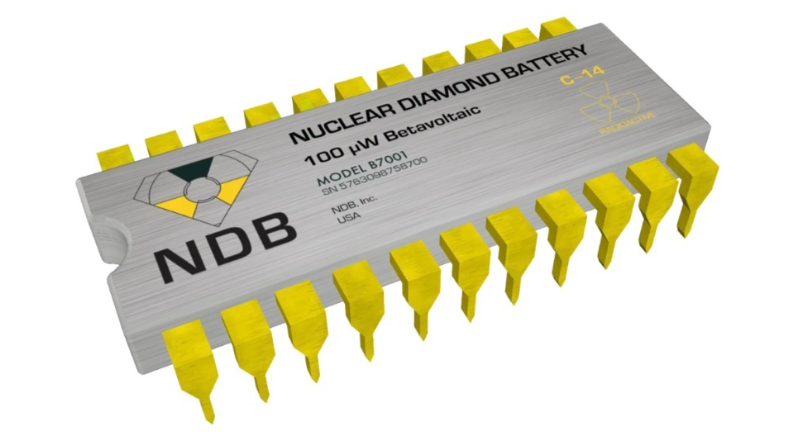
Figure 2. Ilustration of nuclear diamond battery.
Alpha-voltaic Batteries
Similar to betavoltaics, alpha-voltaic batteries use the alpha decay of isotopes (emission of helium nuclei) to generate electricity. Alpha particles are absorbed by a semiconductor, generating charge carriers (electrons and holes) that produce electric current. These batteries are useful for applications where high energy density and long life are required.
Direct Charging Generators (DCGs)
DCGs use the direct charge method, where the radioactive decay directly generates high-energy particles that are then used to induce a charge on an electrode. This method can include configurations where the decay particles (e.g., alpha, beta) directly strike a collector electrode, imparting their charge and creating an electric potential.
Optoelectric Nuclear Batteries
These devices convert the energy of radioactive decay into light through scintillation. The light is then converted into electricity using photovoltaic cells. This method can potentially offer higher efficiency than direct conversion methods by first converting decay energy into photons and then into electricity.
Stirling Radioisotope Generators (SRGs)
Similar to RTGs, SRGs use the heat from radioactive decay, but instead of using thermoelectric converters, they employ a Stirling engine to convert thermal energy into mechanical power, which is then converted into electricity. SRGs can potentially offer higher efficiencies than RTGs.
To learn how graphene batteries make a difference in battery technology, read our blog.
Nanoparticles in Nuclear Batteries
The integration of nanoparticles into nuclear energy batteries signifies a breakthrough in optimizing fuel efficiency and ensuring safer, more compact energy storage solutions.
Nanoparticles in Nuclear Fuel
One of the key advancements in nuclear energy batteries is the integration of nanoparticles in nuclear fuel. Nanoparticles, with sizes ranging from 1 to 100 nanometers, exhibit unique properties that enhance the efficiency of nuclear reactions. In the context of nuclear energy batteries, nanoparticles play a crucial role in optimizing fuel composition and facilitating controlled nuclear reactions.
What is the role of nanotechnology in the development of fuel cells? Learn now.
Enhanced Surface Area and Reactivity
Nanoparticles provide an exceptionally high surface area per unit mass compared to larger particles. This increased surface area allows for greater interaction between the nuclear fuel and surrounding materials, promoting more efficient energy conversion. The enhanced reactivity of nanoparticles contributes to a higher yield of energy from nuclear reactions, making nuclear energy batteries more powerful and compact.
Improved Heat Transfer
Efficient heat transfer is paramount in nuclear energy batteries, especially in RTGs where heat is converted into electricity. Nanoparticles, due to their size and unique thermal properties, facilitate better heat transfer within the system. This results in improved overall efficiency, enabling nuclear energy batteries to operate at higher temperatures and extract more energy from the nuclear fuel.
Nanoscale Materials for Radiation Shielding
The integration of nanoparticles extends beyond the nuclear fuel itself. Nanoscale materials, such as graphene and carbon nanotubes, are employed for radiation shielding in nuclear energy batteries. These materials effectively block or absorb harmful radiation emitted during nuclear reactions, ensuring the safety and reliability of the battery systems.
Applications of Nuclear Batteries
Nuclear batteries offer the potential to provide continuous and reliable power sources for applications where access is difficult or impossible, such as deep space exploration, remote monitoring stations, and medical implants. This capability enables them to deliver innovative solutions across various fields requiring long-term energy solutions.
Space Exploration
One of the most promising applications of nuclear energy batteries is in space exploration. The longevity and reliability of RTGs make them ideal power sources for spacecraft and rovers operating in remote or harsh environments where traditional batteries or solar panels may not be practical. Nanoparticle-enhanced nuclear energy batteries could extend mission durations and power demanding instruments in deep space.
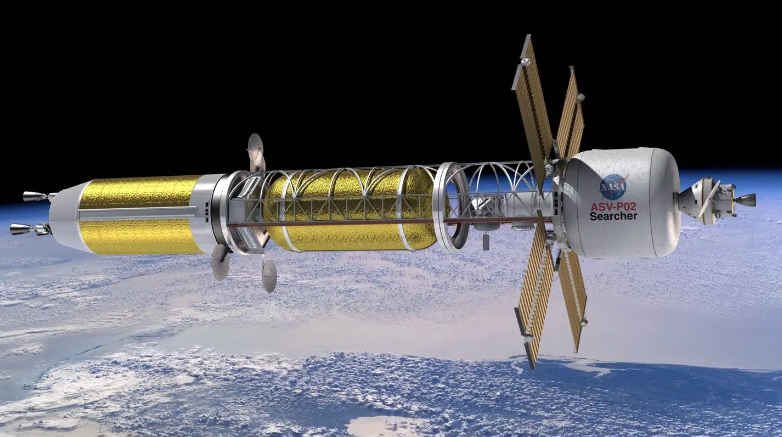
Figure 3. Illustration of a conceptual spacecraft enabled by nuclear thermal propulsion.
Medical Implants
The compact and long-lasting nature of nuclear energy batteries, particularly betavoltaic cells, opens up new possibilities in the field of medical implants. Devices such as pacemakers and neurostimulators could benefit from the steady and reliable power supply provided by nuclear energy batteries, reducing the need for frequent replacements or recharging.
Remote Sensing and Monitoring
In remote or inaccessible locations, where maintaining power infrastructure is challenging, nuclear energy batteries offer a viable solution. These batteries can power sensors, monitoring equipment, and communication devices for extended periods without the need for frequent maintenance. The integration of nanoparticles further improves the efficiency of these batteries in diverse environmental conditions.
Challenges and Considerations
Firstly, despite the potential advantages of nuclear energy batteries, safety concerns related to nuclear materials and radiation persist. Researchers and engineers must prioritize the development of fail-safe mechanisms and robust containment systems to mitigate the risks associated with nuclear batteries, especially in applications where human exposure is possible.
Secondly, the production of nanoparticles and nuclear materials for nuclear energy batteries can be costly, posing a barrier to widespread adoption. Researchers are exploring cost-effective synthesis methods for nanoparticles and more accessible sources of nuclear fuel to make nuclear energy batteries economically viable for various applications.
Lastly, the deployment of nuclear energy batteries, particularly in medical and space applications, necessitates stringent regulatory frameworks and ethical considerations. Collaborative efforts between scientists, policymakers, and ethicists are essential to establish guidelines that ensure the responsible development and use of this transformative technology.
Future Prospects and Innovations
The progression in nuclear battery technology signifies a nuanced advancement in the domain of energy storage, facilitating an amalgamation with renewable energy sources and underpinning extended endeavors in space exploration. This evolution represents a deliberate stride towards sophisticated and sustainable energy paradigms.
Advancements in Nanoparticle Technology
As nanoparticle research continues to evolve, advancements in synthesis techniques and material design will likely lead to more efficient and cost-effective nuclear energy batteries. Tailoring nanoparticles for specific applications and improving their compatibility with nuclear fuel can unlock new possibilities for energy storage.
Integration with Renewable Energy Sources
Combining nuclear energy batteries with renewable energy sources, such as solar and wind, presents an exciting avenue for creating hybrid energy systems. By addressing the intermittent nature of renewables with the steady power output of nuclear energy batteries, these hybrid systems could contribute to a more sustainable and resilient energy infrastructure.
Expanded Space Exploration Missions
The development of more efficient and compact nuclear energy batteries could enable extended and ambitious space exploration missions. Human missions to Mars, deep-space probes, and the establishment of long-term lunar bases could benefit from the reliable and long-lasting power provided by advanced nuclear energy battery technology.
Conclusion
Nuclear batteries, with the aid of nanoparticles, transcend the boundaries of conventional energy storage, offering a glimpse into a future where power is not just harnessed but optimized at the nuclear level. As researchers, policymakers, and society at large grapple with the complexities of this emerging technology, the journey towards harnessing the power of nuclear energy batteries represents a collective stride towards a more sustainable, resilient, and innovative energy landscape. It is a journey that beckons us to navigate the frontiers of science and ethics, ensuring that the promises of nuclear energy batteries are realized for the betterment of humanity and the planet we call home. In this journey, discover the potential of nuclear batteries with the high-quality nanoparticles offered by Nanografi, and seize the opportunity to shape the energy solutions of the future.
Betavoltaic device - Wikipedia. (n.d.). Retrieved February 12, 2024, from https://en.wikipedia.org/wiki/Betavoltaic_device
Fuel Cells Development with Nanotechnology - Nanografi Nano Technology. (n.d.). Retrieved February 12, 2024, from https://nanografi.com/blog/fuel-cells-development-with-nanotechnology-728a03/
Graphene Batteries as Promising Battery Technology - Nanografi - Nanografi Nano Technology. (n.d.). Retrieved February 12, 2024, from https://nanografi.com/blog/graphene-batteries-as-promising-battery-technology-nanografi/
How to build a better battery through nanotechnology | Science | AAAS. (n.d.). Retrieved February 12, 2024, from https://www.science.org/content/article/how-build-better-battery-through-nanotechnology
Is using nuclear materials for space travel dangerous, genius, or a little of both? - Bulletin of the Atomic Scientists. (n.d.). Retrieved February 12, 2024, from https://thebulletin.org/2021/07/is-using-nuclear-materials-for-space-travel-dangerous-genius-or-a-little-of-both/
Jain, R., Lakhnot, A. S., Bhimani, K., Sharma, S., Mahajani, V., Panchal, R. A., Kamble, M., Han, F., Wang, C., & Koratkar, N. (2022). Nanostructuring versus microstructuring in battery electrodes. Nature Reviews Materials 2022 7:9, 7(9), 736–746. https://doi.org/10.1038/s41578-022-00454-9
Lu, J., Chen, Z., Ma, Z., Pan, F., Curtiss, L. A., & Amine, K. (2016). The role of nanotechnology in the development of battery materials for electric vehicles. Nature Nanotechnology 2016 11:12, 11(12), 1031–1038. https://doi.org/10.1038/nnano.2016.207
Nanobatteries - Wikipedia. (n.d.). Retrieved February 12, 2024, from https://en.wikipedia.org/wiki/Nanobatteries
Nanoparticle electrode for batteries could make large-scale power storage on the energy grid feasible | Stanford University School of Engineering. (n.d.). Retrieved February 12, 2024, from https://engineering.stanford.edu/magazine/article/nanoparticle-electrode-batteries-could-make-large-scale-power-storage-energy-grid
Pomerantseva, E., Bonaccorso, F., Feng, X., Cui, Y., & Gogotsi, Y. (2019). Energy storage: The future enabled by nanomaterials. Science, 366(6468). https://doi.org/10.1126/SCIENCE.AAN8285/ASSET/87ACF1BD-33BB-46EE-BB4E-A8FD33DDBE2F/ASSETS/GRAPHIC/366_AAN8285_FA.JPEG
Review and Preview of Nuclear Battery Technology. (n.d.). Retrieved February 12, 2024, from http://large.stanford.edu/courses/2017/ph241/park-j1/
This Diamond Battery Runs on Nuclear Waste Will Last 28,000 years. (n.d.). Retrieved February 12, 2024, from https://www.esquiremag.ph/culture/tech/battery-nuclear-waste-a00293-20210408
Recent Posts
-
Advanced Materials for Unmanned Aerial Vehicle (UAV) Protection Against Laser
Consider a UAV on a critical mission, rendered inoperative by a sudden laser attack. With the increa …26th Jul 2024 -
Simulation and Modeling of Material Properties
Our world is composed of a dazzling array of materials, each with its own unique properties that dic …19th Jul 2024 -
Advanced Coatings for Superior Corrosion and Wear Resistance
Corrosion and wear pose significant challenges across various industries, leading to substantial eco …12th Jul 2024

